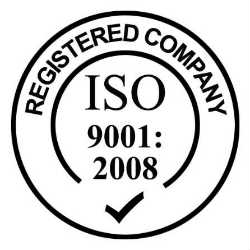Chapter 1: Overview & Setup Procedures
This chapter gives students a general overview of the features and benefits of using the Receivables Management module in an integrated environment. In addition it discusses setup procedures for the Receivables Management module. You examine in detail the options available to customize this module to reflect the way your organization does business It also focuses on the integration of this module with other modules in the Microsoft Dynamics GP application.
Main Topics
Receivables Management Features and Benefits
Receivables Management Overview
Receivables Management Setup Checklist
Company and Posting Setup Procedures
Receivables Management Setup and Options
Sales Territory Maintenance
Salesperson Maintenance
Customer Class Setup
Customer Maintenance
Customer Account Maintenance
Customer Maintenance Options
National Accounts Maintenance
Refund Checks Setup
Receivables Management Setup Reports
Beginning Balances
Customer Summary
Lab
Modify Existing Receivables Management Setup Selections
Add a New Sales Territory
Add a New Salesperson Record
Modify an Existing Customer Class
Add a New Customer Record
Add a New National Account
Set up Refund Checks
After completing this module, students will be able to:
Identify the features and benefits available when using Receivables Management
Discuss integration that takes place between Receivables Management and other modules within the Microsoft Dynamics GP system
Identify the navigation used to access the windows for transactions, reports, utilities, routines, and inquiries in Receivables Management
Customize settings for the Receivables Management module
Set up Sales Territories and Salesperson information
Create Customer Classes and assign customers appropriately
Create Customer Records
Set up Refund Checks
Enter beginning balances for each customer
Chapter 2: Daily Procedures
This chapter defines the ways transactions can be entered and posted in Receivables Management. You explore the difference between transaction level and batch level posting, and the methods for posting batches. This chapter demonstrates the many types of transactions that can be entered in Receivables Management. Entering customer payments, printing refund checks and Scheduled Payments is covered in this chapter.
Main Topics
Transaction Entry Overview
Posting Overview
Receivables Batch Entry
Receivables Transaction Entry
Applying Documents
Post Transactions
Scheduled Payments Checklist
Scheduled Payments Entry
Entering Cash Receipts
Apply Posted Transactions
Entering Refund Checks
Batch Recovery
Labs
Enter and Post the Invoice
Enter and Apply a Credit Memo
Create a Payment Schedule for a Sale to a Customer
Enter a Cash Receipt and Apply the Payment
Enter a Cash Receipt and Apply the Payment for a National Account
Apply a Payment to an Invoice
Post transactions and Batches
Create, Print, and Post a Refund Check
After completing this module, students will be able to:
Enter and post transactions using the transaction level or batch posting method
Enter the different types of transactions in Receivables Management
Enter and post customer payments
Enter transactions involving national accounts
Apply Receivables documents
Recover batches due to posting interruption
Chapter 3: Maintaining Records
This chapter examines the functionality available to maintain your Receivables Management records. This chapter focuses on placing and removing customers holds. The process to edit or void posted transactions as well as handle NSF charges is covered in detail. Time is spent discussing the procedure for changing and deleting records, removing historical information and the effects of removing this history. Retrieving information is also a focus of this chapter. Time is also spent discussing the inquiry windows and reports that can be generated from the Receivables Management module.
Main Topics
Handling NSF checks, Voiding, and Waiving Posted Transactions
Change and Delete Records
Edit posted transactions
Remove History
Reconcile
Retrieve Information
Creating Report Options
Creating and Printing Report Groups
Labs
Void a Customer Invoice
Assess NSF Charge for a Customer
Verify Original Document has been Voided
After completing this module, students will be able to:
Place and remove customer holds
Handle NSF checks
Waive finance charge
Void open and historical transactions
Edit posted transactions
Change and delete customer records
Remove historical Receivables information
Inquire and report on customer information
Chapter 4: Period-End Procedures
This chapter examines the processes that are completed at the end of the month, period, calendar and fiscal year. This chapter focuses on the errors that may cause Receivables Management to be out of balance with the General Ledger.
You examine the reports that should be printed prior to performing the closing process. Time is spent examining what actually takes place during the closing process and the two types of closings: calendar year and fiscal year.
Main Topics
Period-end Checklist
Aging Process
Assess Finance Charges
Print and/or Reprint Customer Statements
Transfer Sales Commission
Write Off Documents
Paid Sales Transaction Removal
Reconcile Receivables Management to General Ledger
Closing the Fiscal Period
Calendar Year-end Closing
Fiscal Year-end Closing
Tax Year-end Close
After completing this module, students will be able to:
Complete the processes that are performed at the end of an accounting period
Complete the processes that performed at the end of a calendar or fiscal year
Perform the Year-end closing process



